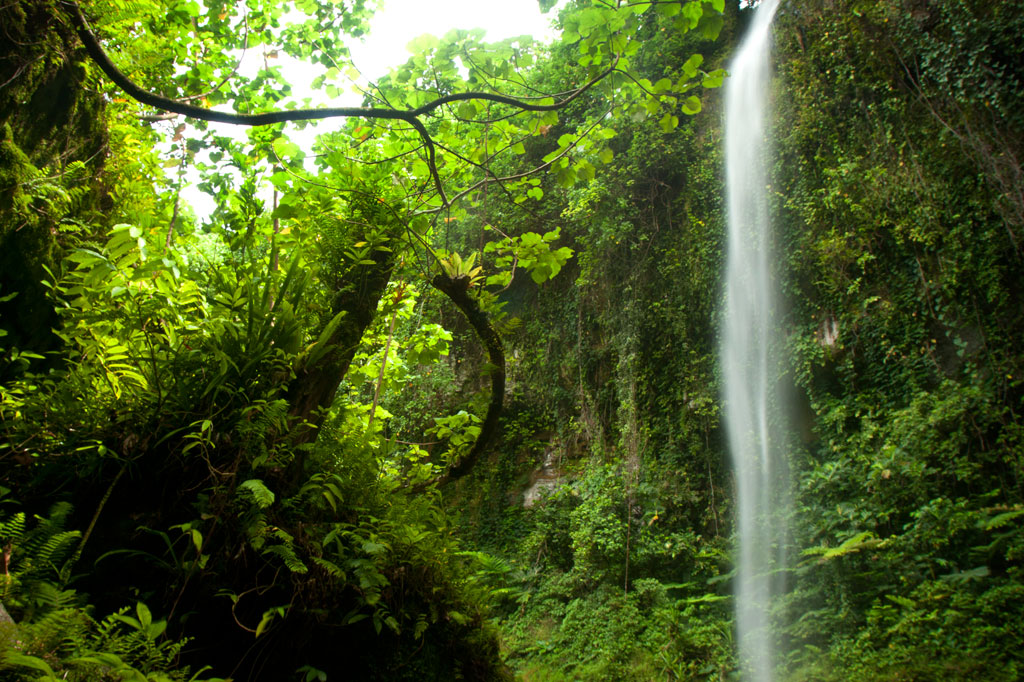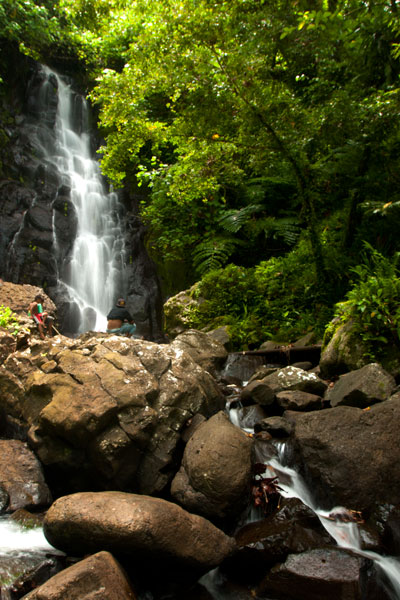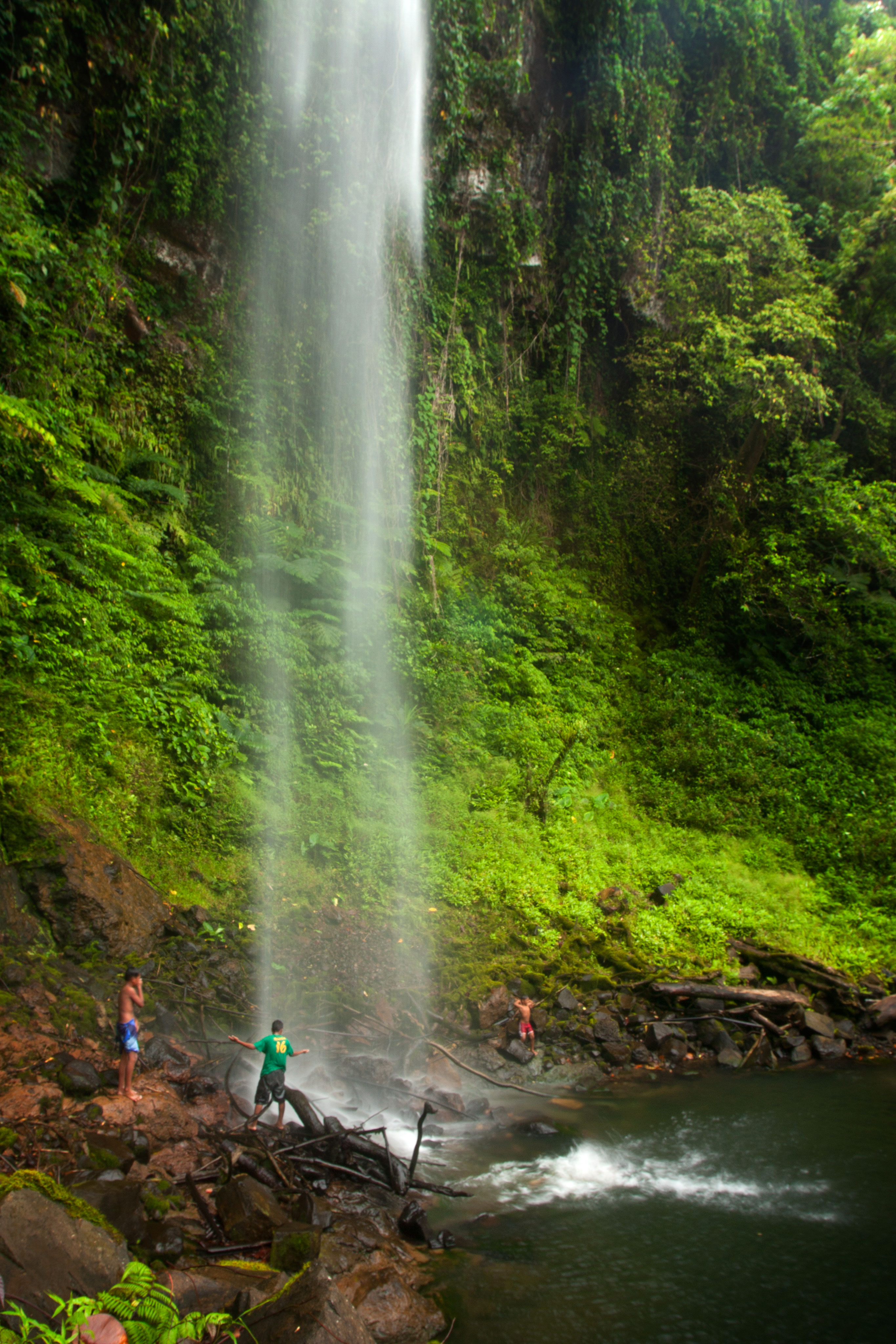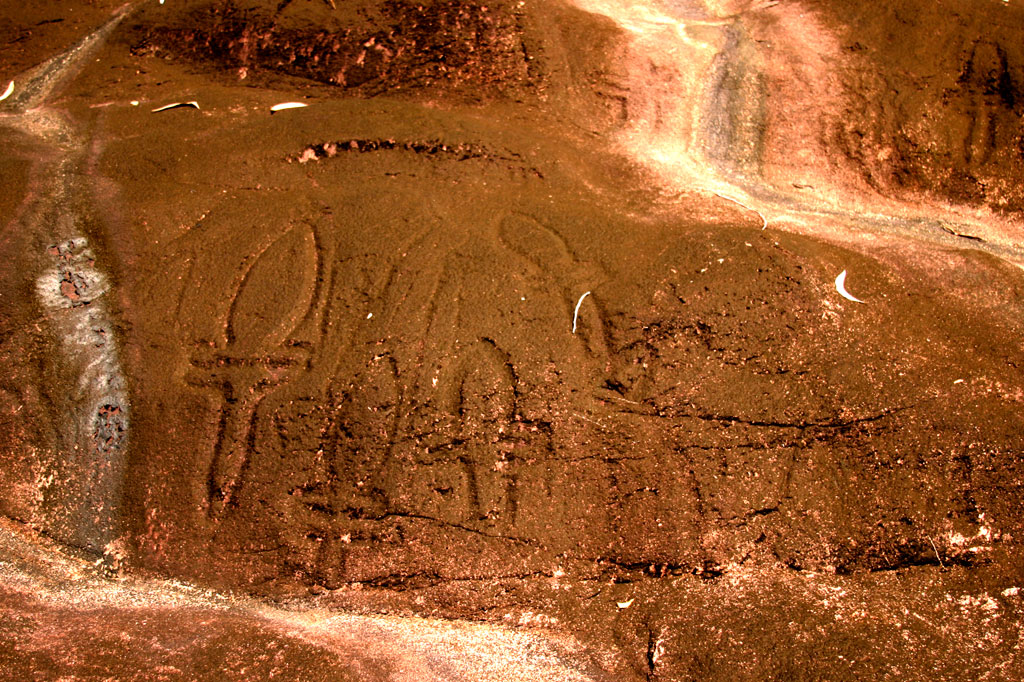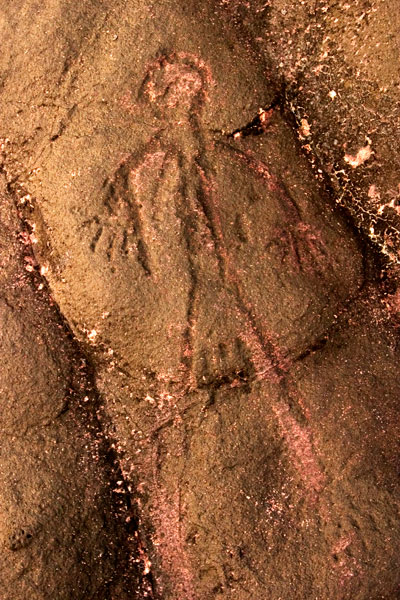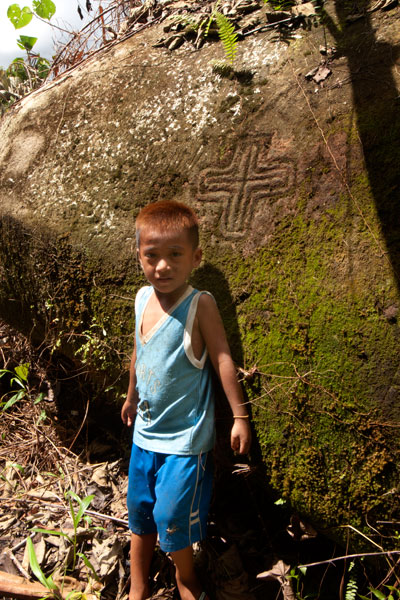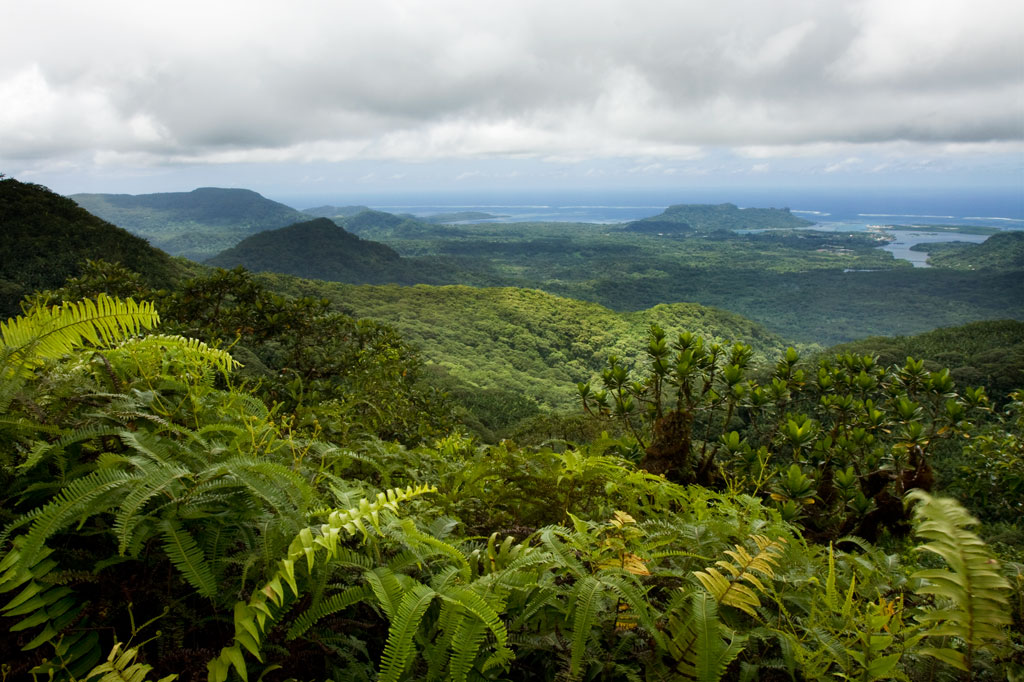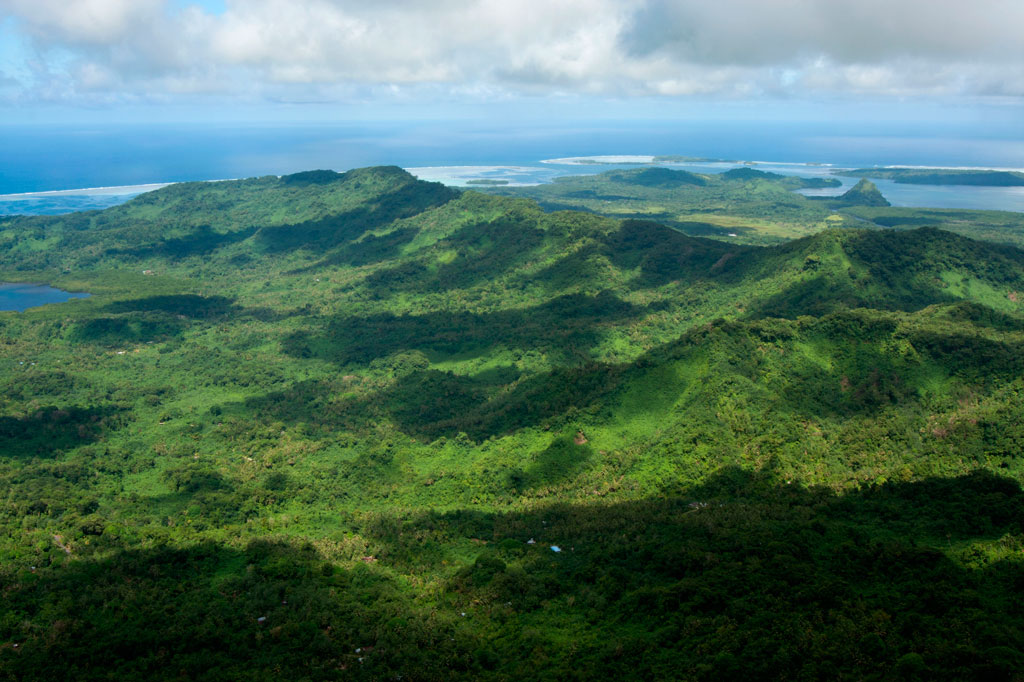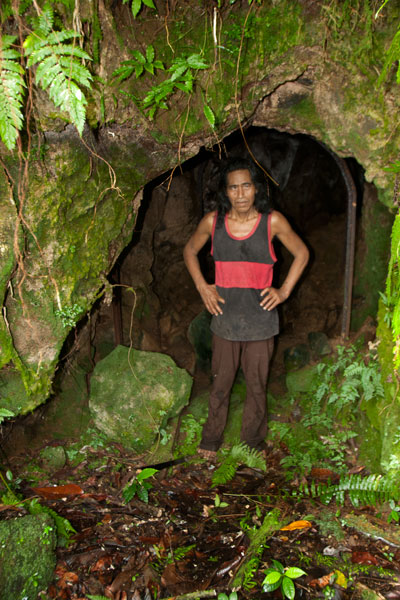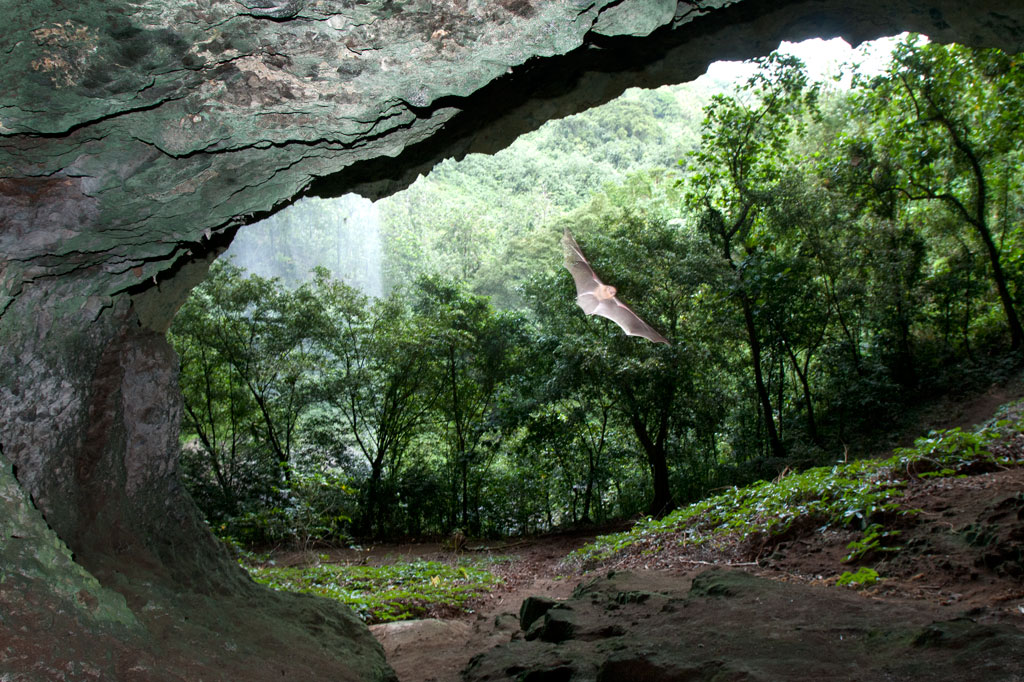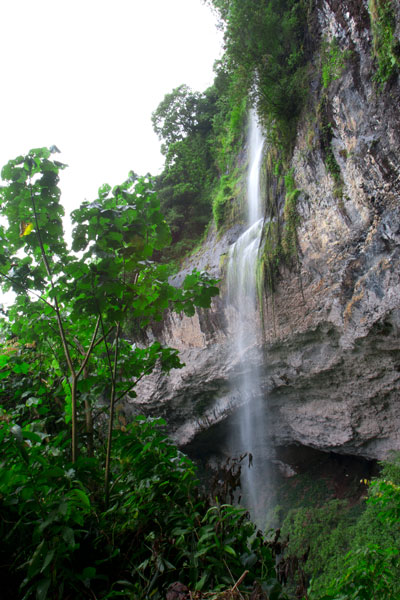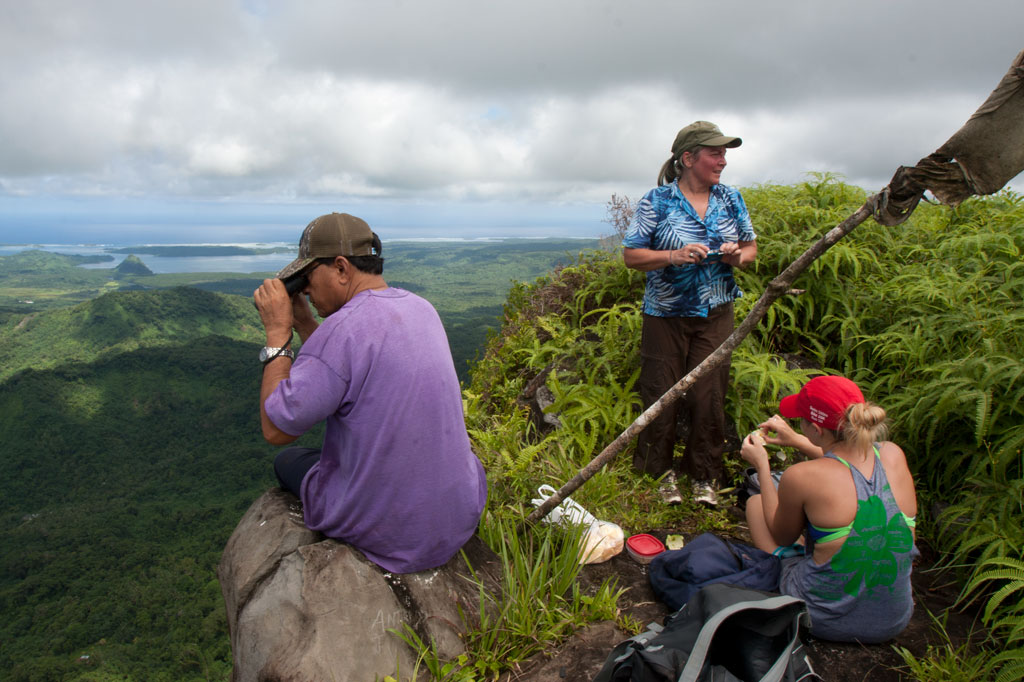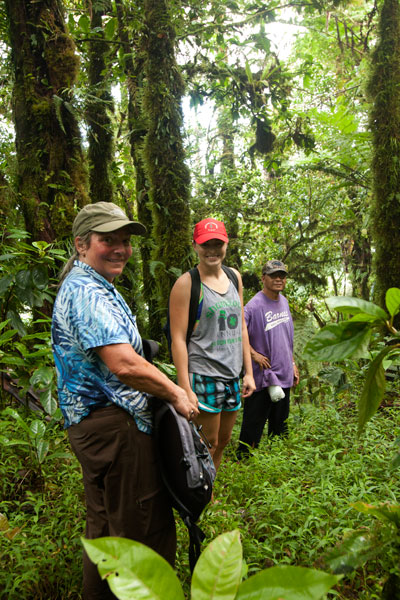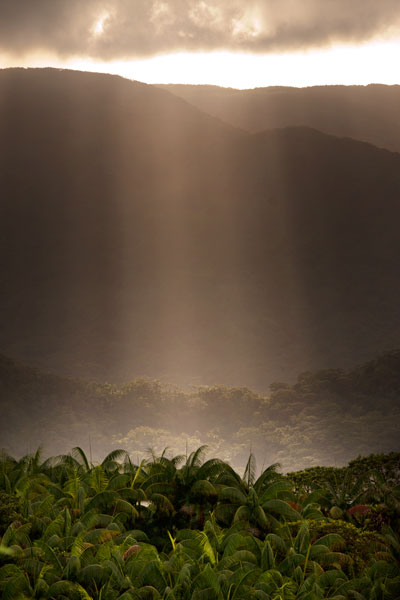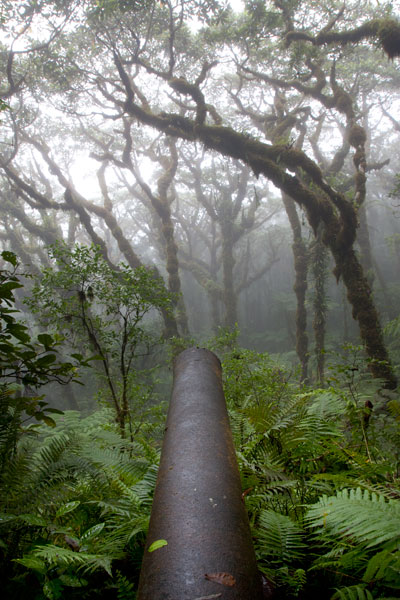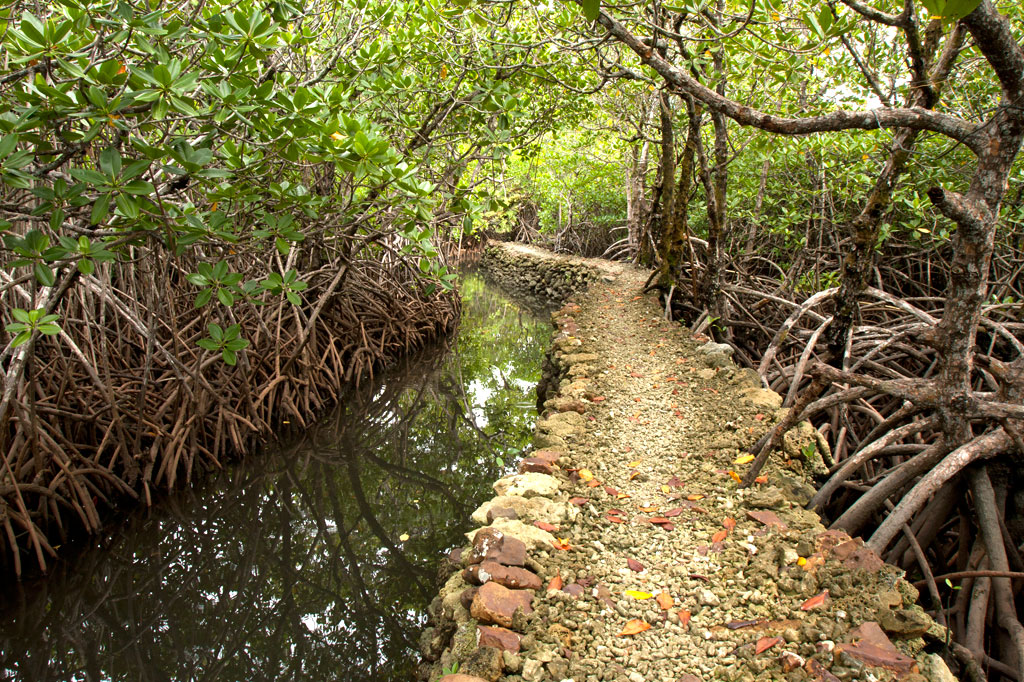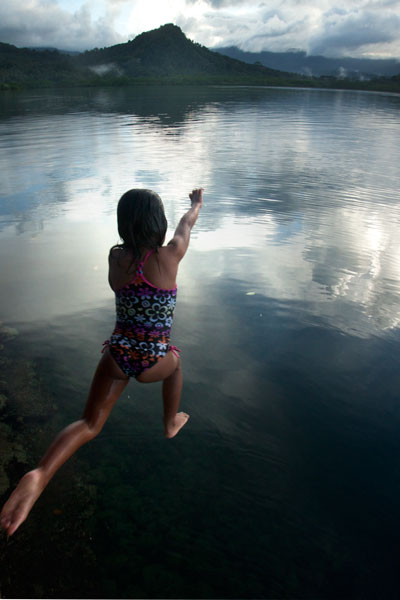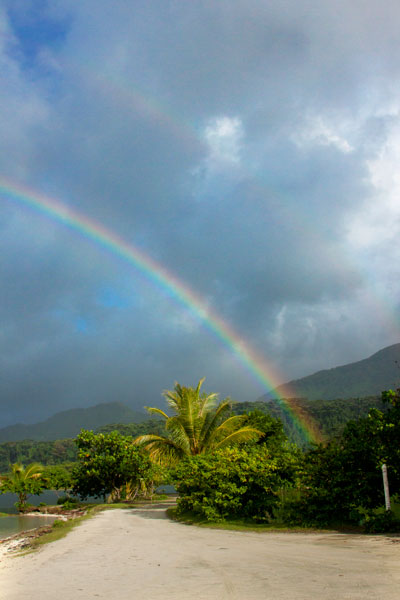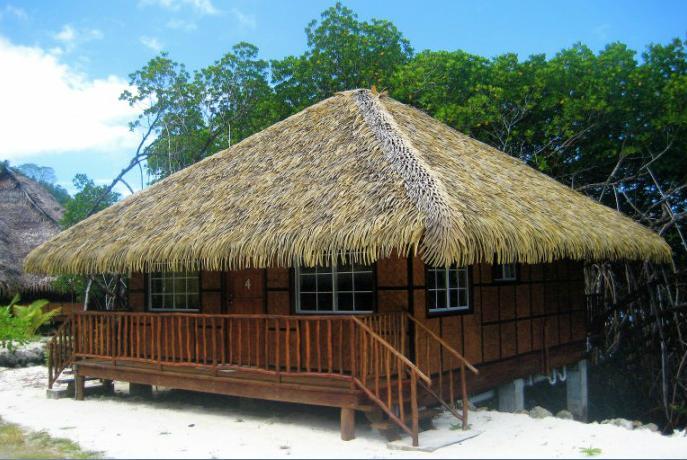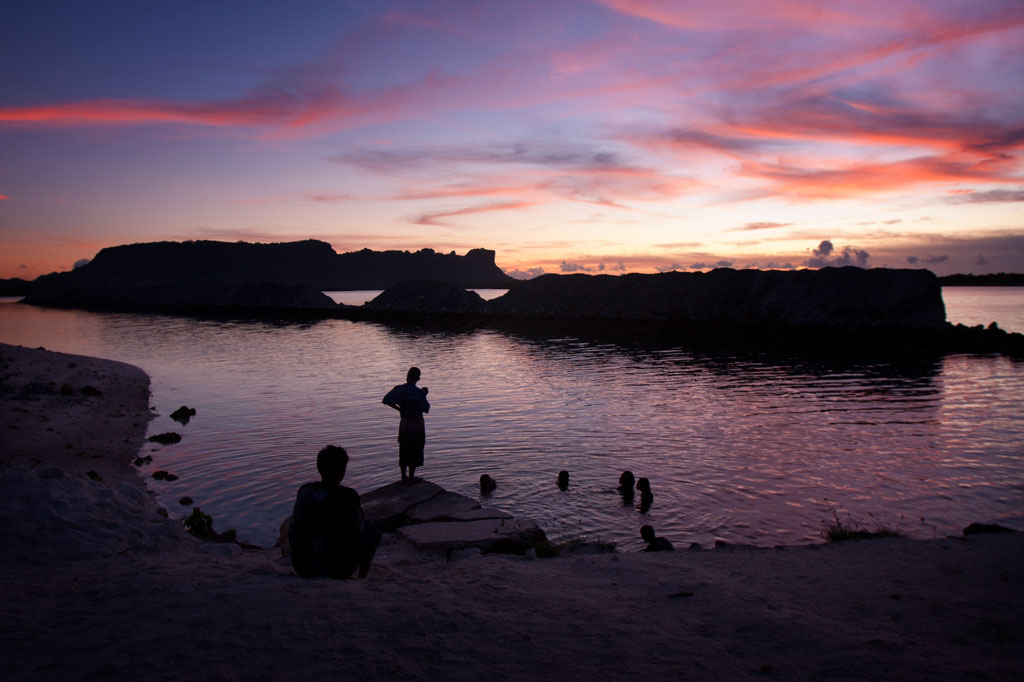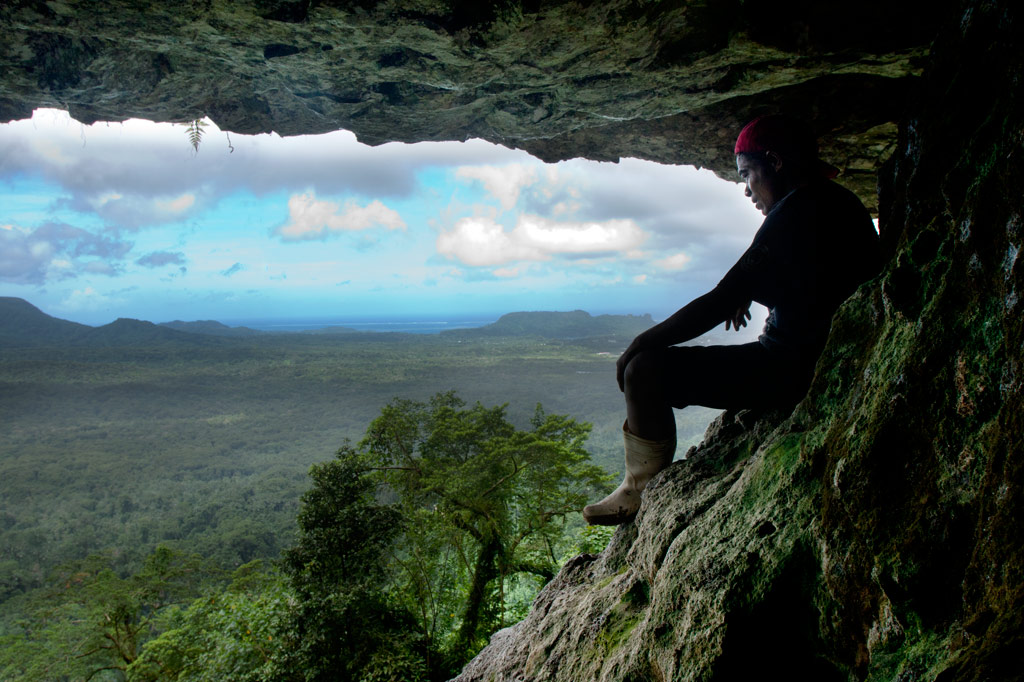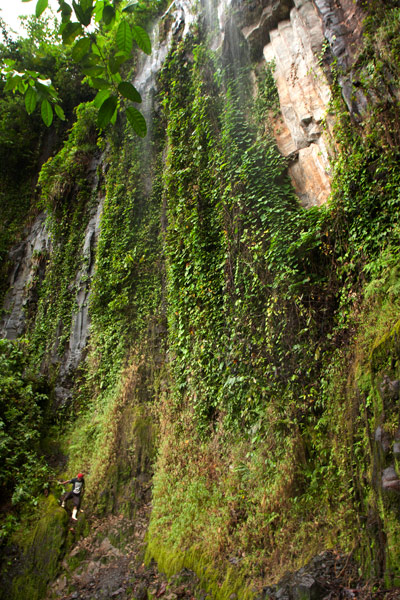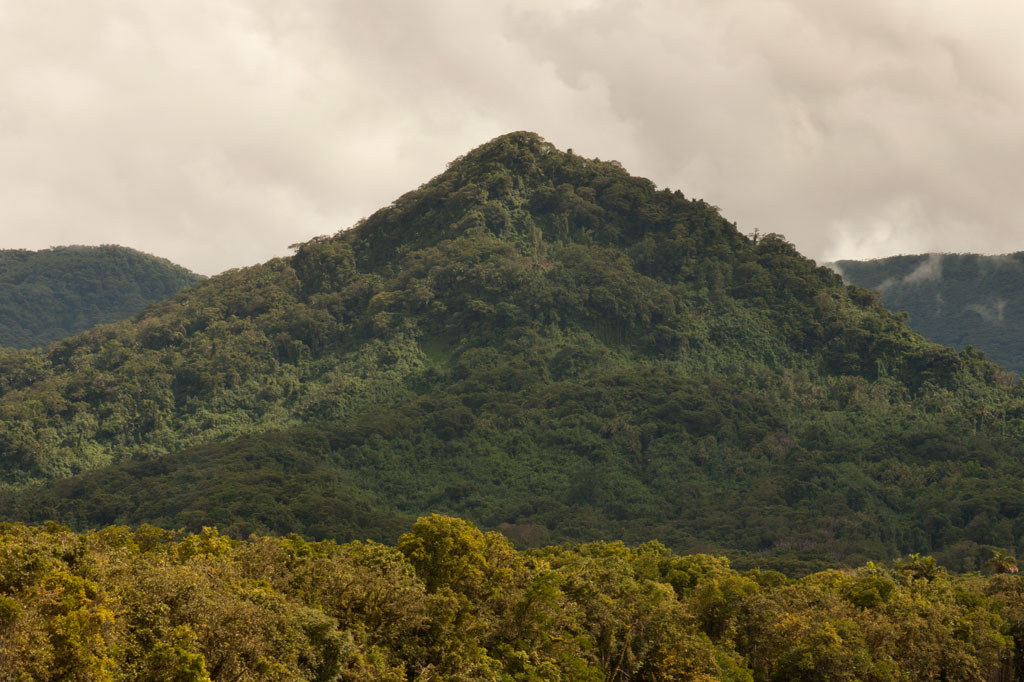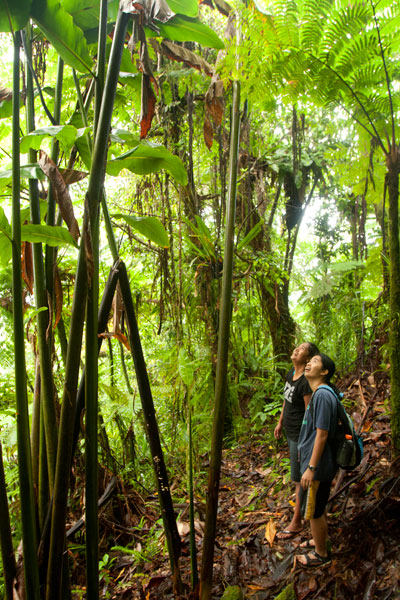Pahnsapw, which means “beneath the land,” refers to a pair of tall, majestic waterfalls which plummet off the edge of a high plateau in central Madolenihmw (it’s also the name of the farmstead). Both waterfalls are found on the land of the Silbanuz family (relatives of the people at the Nan Madol trailhead) — the smaller falls is lower down and hidden from view until you get up-stream, but the upper falls can be seen from the Circle Island Road.
The hike starts at the end of an unpaved road and criss-crosses the stream or runs along the bank up to the first falls, which is about 4 to 6 meters (13-20 ft) high and has a beautiful shallow pool at the base, excellent for a quick, cool swim. Unless you’re in good physical condition and don’t mind getting dirty, this is where you should stop.
To reach the second falls, the route climbs straight up an extremely steep (and sometimes muddy) slope to the right of the lower waterfall with little to hold on to, turns horizontally across the slope face, and then returns to the river, where there’s a secluded pool in a shady nook. It might be a good idea to bring a length of rope and have the guide secure it to something at the top of the slope prior to scrambling up. Five minutes up-stream is the second waterfall, which is about 18 meters (60 ft) tall and falls into a large, deep pool. The water at both waterfalls is cool and very clean.
The Silbanuz family charges an access fee of $2.00 per person. Any of the teenagers around the house can be hired as guides. Offer $12.00.
- Plan for 2 hours round-trip with some leisure time at both of the waterfall pools.
Nankep Waterfall
The next waterfall going south is known as Nankep. People living in the area say the name means “inlet” or “in the cup” (depending on who you talk to). The latter seems logical, except that the Pohnpeian word kep is a loaner from English and wouldn’t date back beyond the early 1800s. The site may have had a different name prior to that time or it has picked up new meaning over the years. The road to this trailhead is steeper and more rutted than the one to Pahnsapw, so it’s best to park at the bottom near the Circle Island Road and walk to the end, where the trail begins on Waltis Herdinand’s land — an area referred to as Elilpei. The hike is short and relatively easy, concluding in a hidden nook with a small plunge pool. The best time to visit Nankep is after a period of heavy rain as it can be nothing more than a tiny ribbon of water at other times. Some people believe that the falls will be dry if all the members of the visiting group are male, so mix it up.
No official access fee is charged.
- Plan for 90 minutes round-trip with time to swim at the falls.
- To hire a guide, ask at the houses in the area, contact Hanke Albert at +691.320.4047, or call the owner of the land around the falls, Waltis Herdinand, at +691.320.2909. Offer $12.00.


